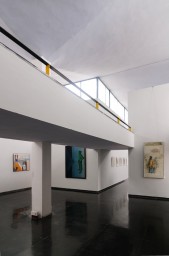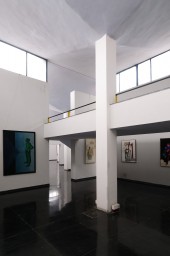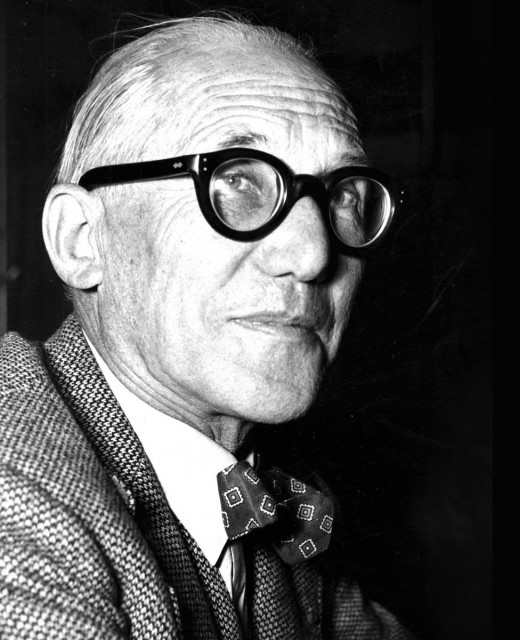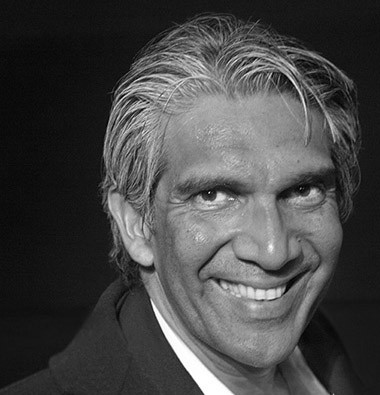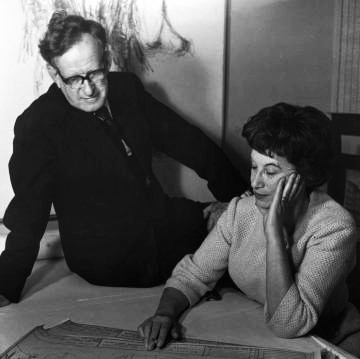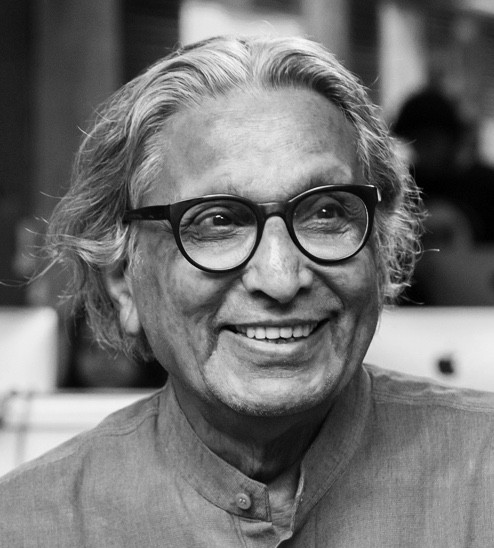Passage to India
“Chandigarh sera la ville d’arbres, de fleurs et d’eau, de maisons aussi simples que celles du temps d’Homère et de quelques splendides édifices du plus haut modernisme. (…)”
Le Corbusier
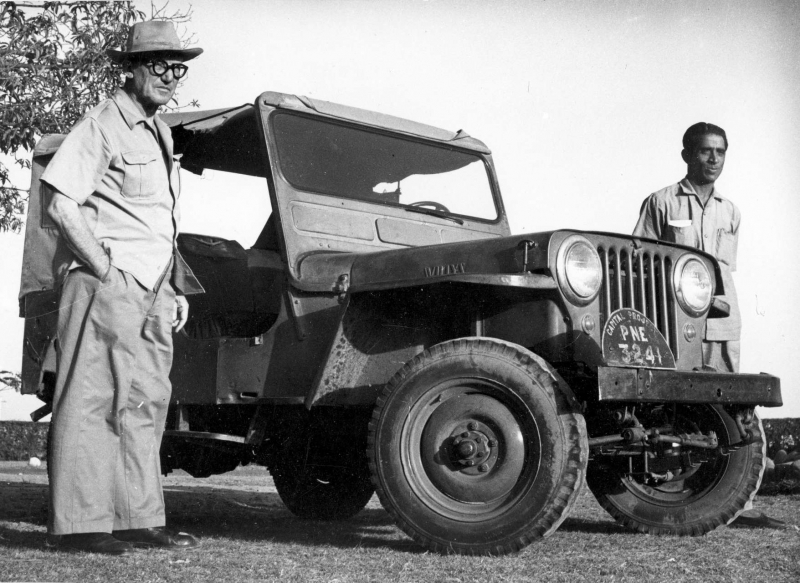 Fondation le Corbusier
Le Corbusier travelling in India – © Fondation le Corbusier
Fondation le Corbusier
Le Corbusier travelling in India – © Fondation le Corbusier
1950, Paris.
On a summer morning is a letter in the bus, 35 rue de Sèvres, with the sender Government of Punjab, India. The short notice announces the arrival of two officers with the task of putting together a team of European architects to design a totally new city 250 km north of New Delhi.
Five months later, on a cold and gray November day, steps Mr. PN Thapar and P.L. Varma within the office of Le Corbusier in Paris. The 63-year-old Corbu greeted them warmly enough. He makes clear that he will move to India and that the new city will be signed in Paris.
For that meeting with the master was the skepticism of Thapar and Varma already big. They had visited the Unité d’Habitation in Marseilles and doubts about the underlying ideas for a country like India. The dour encounter was the uncertainty reinforced. They left Paris and traveled to England.
In London they meet Edwin Maxwell Fry and Jane Drew Beverly. There wrists them the possibility to further develop the basic idea for Chandigarh by American architect Mayer.
But Varma and Thapar had, despite all doubt and uncertainty, the downright innovative potential of Le Corbusier and his pioneering vision urbanistic seen. They ask Fry how he felt about the idea of working together in a team with Le Corbusier. The Englishman replied: “Honour and glory for you, and an unpredictable portion of misery for me.” But he was willing to undergo the misery in exchange for the possible honor.
Two days later – it was a Sunday morning at 9.30 – sit Fry, Drew, Thapar, Varma and Le Corbusier together in Paris and a contract is signed. The workaholic Le Corbusier was a Sunday morning, it tastes: “He loved India because – unlike France – it was a country where they worked seven days a week.”
Free to Le Corbusier (A Life) by Nicholas Fox Weber.
Architecture Trip to India
Chandigarh was the impetus for the architectural quest Archipelago through a part of the Indian subcontinent. “ What remains after that quest and lasts, is the feeling ‘essence’ to have discovered. Architectural, cultural and human essence. The feeling also: “Open your eyes! Look around you! “A culture shock. It is not a tourist trip. A significant part of our time goes to cities that are discussed in guidebooks hardly, eg. Ahmedabad. Perhaps the most beautiful house of Le Corbusier seen.
We wander in amazement through a country with a history, a swirling mass, a frenetic dynamism, bright colors and smells, grinding poverty alongside wealth disgusting, living past and surprising future, traffic chaos and noise. We arrive in Mumbai and Delhi, Ahmedabad and Chandigarh, and we obviously see the Taj Mahal. We see both historic buildings and historic modernism and contemporary work. We see work of Le Corbusier, Louis Kahn, Charles Correa, Studio Mumbai, Balkrishna Doshi, Matharoo, Bimal Hasmukh Patel, Sir Edwin Lutyens, Raj Rewal, Joseph Allen Stein, Aditya Prakash … Too many to remember.
But mostly, we see a world.
Wim Supply
There was a second trip from March 30 to April 16
Tour guide: trip of February: Wim Supply & Arnout Fonck; trip of April: Bruno Vanbesien, Gery Vandenabeele & Wim Supply
Programme
D1
Brussel
Mumbai
D2
Mumbai
Kanchenjunga Apartment Tower – Charles Correa, 1970-83
Antilia Building – Perkins & Will, 2010
Salvacao Church – Charles Correa, 1977
Tote On The Turf – Serie architects, 2009
Victoria Terminus – Frederick William Stevens, 1887
Victoria and Albert Museum – William Tracey, 1862
D3
Mumbai-Alibagh
The Studio + Reading Room 2 – Studio Mumbai, 2003
Palmyra House – Studio Mumbai, 2007
D4+D5+D6
Ahmedabad
Sanskar Kendra Museum – Le Corbusier, 1958
Mill Owners Association Building – Le Corbusier, 1954
Shodan House – Le Corbusier, 1956
Sarabhai House – Le Corbusier, 1951
IIM – Indian Institute of Management – Louis Kahn, 1962-74
IIM extension – Bimal Hasmukh Patel, 2007
Gandi Memorial Sabarmati Ashram – Charles Correa, 1963
Sangath – Balkrishna Doshi, 1981
Gufa – Balkrishna Doshi, 1991
Kanoria Centre For Arts – Balkrishna Doshi, 1985
Institute Of Indology – Balkrishna Doshi, 1962
Tagore Theatre – Balkrishna Doshi, 1967
CEPT – School of Architecture – Balkrishna Doshi, 1962
Premabhai Hall – Balkrishna Doshi, 1956-72
House With Balls – Matharoo, 2004
Net House – Matharoo
Prathma Bloodbank – Matharoo, 1998
Sardar (Vallabhbhai) Patel Stadium – Charles Correa, 1965
Dada Hari Ni Vav Stepwell, 1499
D7+D8
Agra
Taj Mahal , 1631-53
Akbar mausoleum Sikandra, 1605-13
Fatehpur Sikri
Fatehpur Sikri, 1571
D9+D10+D11
Delhi
Rashtrapati Bhavan – Presidents House – Edwin Lutyens, 1914-31
India Gate – Edwin Lutyens
India International Center – Joseph Allen Stein, 1962
Belgian Emabassy – Satish Gurjal, 1983
Hall of Nations – Raj Rewal, 1972
Life Insurance Corporation – Charles Correa, 1975-86
India Habitat Centre – Joseph Allen Stein, 1993
Aman Hotel – Kerry Hill, 1993
Lotus Tempel – Fabriborz Sahba, 1976-86
D12+D13+D14
Chandigarh
Government Museum & Art Gallery – Le Corbusier, 1952-68
Architecture Schools – Le Corbusier, 1950-65
Architecture Museum – Le Corbusier, 1952
Secretariat – Le Corbusier, 1953
Vidhan Sabha / Assembly Hall – Le Corbusier, 1955
Punjab & Haryana High Court – Le Corbusier, 1955
Ghandi Bhavan – Pierre Jeanneret & Maxwell Fry, 1962
Fine Arts Museum – Pierre Jeanneret, 1967
Student Facilities campus I – Shri B.P. Matur, 1968-75
Le Corbusier Center – Pierre Jeanneret, 1952
Rock Garden – Nek Chand, 1957-…
Tagore Theatre – Aditya Prakash
Tower of shadows – Le Corbusier, 1960
Lake pavilion + Open Hand – Le Corbusier
D15+D16
Dhaka
Jatiya Sangsad Bhaban – Parliement Bangladesh – Louis Kahn, 1962-83
Institute of fine arts – Muzharul Islam, 1955
Shrine of three national leaders – Masud Ahmed
D17+D18
Dhaka
Brussel
 Arnout Fonck
Palmyra house - Studio Mumbai, 2007
Arnout Fonck
Palmyra house - Studio Mumbai, 2007











